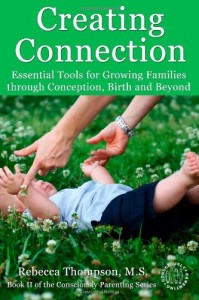14 Changes To Support Breastfeeding We Need To Make Now
Join Rebecca Thompson in Costa Rica for a Family and Parenting Retreat October 10-17, 2015
Yesterday, I talked about the amazing properties and the complex role of breastmilk in our bodies and metabolism, the way our bodies store fat depending on our infant nutrition and food source, along with short and long-term health benefits of human milk for human babies.
And I only scratched the surface.
So why doesn’t everyone breastfeed? Or better yet, what can we do to make breastfeeding more possible?
It turns out that the answer is almost as complex as breastmilk itself.
I have met so many mothers who wanted to breastfeed their babies, but weren’t able to do so or had great difficulty getting started. Why? Here are some things we can do to make it more likely that mother-baby dyads will be able to breastfeed.
1. Normalize breastfeeding in our culture

We need to see breastfeeding, talk about breastfeeding, and find ways to make it easier for families to get support. When I was growing up, I remember my brother being bottle fed. That’s what you do with babies, right? The first person I remember breastfeeding was my friend who had a baby right about the time I got married at age 20. She invited me to stay when she fed her baby and talked about it with me. I couldn’t understand why a person would breastfeed when they could just give a bottle. When we make steps to normalize breastfeeding, we all benefit.
2. Avoid unnecessary medications during labor
Babies whose mothers have received Pitocin or an Epidural during labor also receive an IV, which engorges the mother and often makes latching difficult. Pain relievers can also cause the baby to be disoriented and have difficulty finding the breast, latching on, and coordinating the suck-swallow-breathe necessary to successfully nurse. Some medications are worse than others. And some takes up to 3 weeks to completely leave the baby’s immature system. Pitocin often leads to other interventions and distress the baby, which can make it more difficult for the baby to organize after birth enough to learn to breastfeed.
3. Keep mother-baby together right after birth

Many hospitals are anxious to do their after birth procedures immediately- washing the baby, weighing the baby, doing an initial check of the baby, medical interventions including vitamin K and eye drops- within minutes of birth. Some hospitals have begun an initiative to “Wait for 8”, allowing mothers and babies to stay together and bond without interruption for 8 at least hours after birth. Unless there is a medical reason to separate mother and baby, mother-baby need to be together. Breastfeeding goes better with that relatively small change.
4. Eliminate unnecessary procedures done on the baby
Silver nitrate or antibiotic eye drops put in babies eyes right after birth obscures the baby’s ability to see and can cause pain. (Unless the mother has an active STD, it is unnecessary.) Vitamin K shots and blood draws are very uncomfortable. If the baby is suctioned, there can be oral aversions and difficulty initiating breastfeeding. Circumcision is a painful procedure on a baby boy’s most sensitive body part. Being in pain can make a baby less willing to nurse or unable to coordinate efforts to nurse.
As with any procedure on a newborn, sometimes the risks outweigh the benefits (and sometimes not), so move consciously through these decisions and be aware that these kinds of interventions can have a big affect on breastfeeding. In cases where they’re necessary, breastfeeding at the time of the procedure reduces pain. You can also talk to the baby about what will happen and be present with the baby for comfort and connection.
5. Allow babies to initiate labor on their own
Unless there is a sound medical reason, induction should be avoided. When the babies are very early, they aren’t mature enough to coordinate their suck-swallow-breathe to effectively nurse. We are just beginning to understand the complexities of a baby initiating labor and when that happens, baby is ready. Unless there is a clear medical indication requiring medical intervention wait for baby to initiate labor on his or her own. Breastfeeding is likely to go better.
6. Find knowledgeable support to facilitate breastfeeding
I would love to say that the help I received in the hospital made a big difference for me in my breastfeeding relationship, but it didn’t. The special lactation consultant wasn’t available until the second day I was there and honestly wasn’t helpful when she did arrive. The other nurses didn’t know much about lactation or how to support the two of us to get started. Having good support is important for all babies, but especially important for babies with special situations, including premature babies and medically fragile babies.
7. Support from baby’s dad

I have seen some amazing dads who do everything they can to help the mother succeed at breastfeeding. Those dads are heroes to their family! And I’ve seen dads who aren’t ok with breastfeeding, even when it is going well, and the mother has weaned because it is much easier than dealing with an unhappy husband. Dads need to be educated about the gift a mother is giving the baby through breastfeeding or breastmilk long before the baby is born. More resources for fathers are incredibly important. We often underestimate their importance.
8. Support for difficult births
When the birth is difficult for mother, it is likely to have been difficult for baby. When mom is exhausted and baby is exhausted, it can be difficult to learn a new skill. Mom and baby (and dad, too!) need some space to share the story of the birth. In our culture, we don’t hear that it is important to tell the story of the birth slowly and in a connected way, but it can be important to moving through those difficult stories and having a connected relationship when that wasn’t possible during the birth.
Babies show their story on the way to the breast. Their experiences are shown through their body movements, sounds, and facial expressions. Sometimes there is a time when it doesn’t look like the baby is going to nurse, but what is really needed is some extra support and space for someone to be curious about what they’re showing us. I use an approach called Healing Stories based on the work of Ray Castellino and the Pre and Perinatal Psychology movement to help make that space for babies (and their parents) to show their stories.

Another resource to support mother-baby is Cranial Sacral Therapy (CST), a hands-on, light touch method. Evelyn Fox, owner of The Red Tent Collective in Dunedin, FL (shown in the image to the right) shares more about her experience with CST. “I have noticed in my CST practice that many babies have neck injuries from birth; from the mildly tight muscles to full blown Torticollis. These babies do not like to have their heads touched and usually prefer one side. They might also have a hard time opening their mouths. Besides CST to release neck and head trauma, I am teaching moms natural breastfeeding positions and they are having great results.” When those challenges are addressed, breastfeeding goes better.
There are many, many ways to support breastfeeding mamas and their babies. And we need to be gentle with ourselves if we didn’t know about them when we were looking for answers and support. And gentle with each other. You likely don’t know the story of the family you’re judging.
9. Understand breastfed baby norms
There have been so many times I hear stories like D’Anne’s where a baby has breastmilk jaundice and is separated from her mother and given formula. Many pediatricians are still using the formula feeding normed tables for growth and development, which can indicate a problem when there isn’t one.
For example, breastfed babies have high growth in the first 6 months and it slows during the second 6 months. Formula fed babies keep a more flat lined curve the whole time. When a breastfed baby is judged against a formula feeding baby’s growth chart, it looks like there is a problem. The biological norm is breastfeeding, so in reality the formula fed baby has gained more weight than would be expected. Do you see the shift?
We also know that babies go through growth spurts where they require more food. In breastfed babies, they may appear hungry and need to nurse more often and this short term frequent nursing increases supply for the baby. If a mother doesn’t know this is happening, she may think she doesn’t have enough milk and reach for formula.
10. More support for breastfeeding challenges
Baby not gaining enough weight? How frequently is baby eating? How many wet and dirty diapers per day? Have we evaluated baby’s latch?
Baby not sleeping through the night? What was the baby’s birth like? Does baby have difficulty falling asleep? Staying asleep? Did we mention it is biologically normal for a breastfed baby to wake frequently at night to feed in the first few months? Try sleeping in close proximity to baby, on same or different surfaces in the same room. It also decreases the incidence of SIDS. (See references)
Baby allergic to something? Has mom tried an elimination diet?
It takes a knowledgeable pediatrician to support a mother without recommending formula as a first line of defense. There are very few times when formula is necessary and it is good that it is there for those times, but it should not be the go to for every problem.
11. Recognizing physical issues with the baby
One of the most common issues right now with babies not being able to nurse effectively is tongue tie. Tongue tie is when the tissue in the mouth under the tongue or above the upper lip is too short or tight to allow effective nursing. It seems everyone is talking about this now and from the little bit of research I did, there may be a connection with prenatal vitamins and folic acid supplementation in susceptible individuals.
When there is a tongue tie, baby is unable to effectively move the tongue to breastfeed. Unfortunately, this also effects speech and sometimes other feeding issues as the child grows. When the tongue tie is corrected, baby can learn to effectively nurse. It can be difficult to find a practitioner who can diagnose and treat it correctly, though.
12. Recognize Adoption as the special circumstance it is
An adoptive mother doesn’t have the benefit of pregnancy to stimulate hormones to nurse a baby. While there are ways a dedicated mother can get the baby breast milk, or stimulate her own supply of breast milk (either partial supply or full supply) it isn’t an easy path. One adoptive mother I spoke with shared how she was criticized for not breastfeeding her adopted baby by family and strangers alike. Sometimes we just can’t win as mothers.
13. Support for nursing in public

Just this year (2015), Virginia passed legislation to protect a mother’s right to breastfeed anywhere she has a right to be. Some states still don’t even protect a mother’s right to breastfeed wherever she and her baby are allowed to be, let alone culturally support the breastfeeding dyad. Add in uninformed employees at restaurants, department stores, and it can feel pretty unfriendly to feed your baby when he’s hungry. In many ways, we’re so much more comfortable with bottles. Formula and bottles are still the norm here. If you’re a breastfeeding mama, educate. If you’re not breastfeeding, defend those mamas who are being given a hard time. Help get laws passed to protect the breastfeeding relationship.
14. Support mother-baby dyad regarding work
Netflix being a recent exception, most employers in the United States don’t support any sort of leave when a family has a baby. This lack of support for working mothers to have time off to nurture their babies, frequent separations, and lack of pumping spaces for mothers returning to work make it really difficult for mothers to continue nursing. And there are few baby friendly work places. Mrs. Ronulli, who took her baby to work with her to the European Parliament, is definitely an exception, especially in the public eye.
As a culture, we don’t value the role of the mother in connecting with her baby. We don’t understand the long-term consequences for babies not receiving breastmilk and not having a connection with their mothers during the early years.
When we really stand back and look at all the barriers to breastfeeding that we have created in our culture, it is no wonder that so many families don’t breastfeed or aren’t able to breastfeed. As a culture, we need to have compassion no matter what a mother feeds her baby. If a mother feeds her baby formula, she is criticized. If a mother breastfeeds her baby, she’s criticized and is sometimes chased out of restaurants or told to feed her baby next to the toilet.
We’re all doing the best we can do. Remember that now.
What were your experiences of breastfeeding? I’d love to hear from you if you’re in the United States or somewhere else with different experiences (or more of the same). Please reply in the comments.
References
Milk, Money, and Madness: The Culture and Politics of Breastfeeding by Naomi Baumslag, MD, MPH, and Dia L. Michels
11. Tongue Tie and MTHFR: http://mthfr.net/the-intersection-of-tongue-tie-mthfr/2014/05/23/
Co-sleeping and SIDS: https://cosleeping.nd.edu/assets/31970/mckenna_why_babies_should_n.pdf
Netflix and paid family leave: http://www.wsj.com/articles/netflix-offers-new-parents-one-year-of-paid-leave-1438735806
Human milk for Human Babies: http://hm4hb.net
Nancy Mohrbacher’s article in Mothering on positions and other challenges: http://www.mothering.com/articles/natural-breastfeeding/
Dr. Jack Newman’s article about nursing an adopted baby: http://www.breastfeedinginc.ca/content.php?pagename=doc-BABB and how to know if your doctor isn’t really supportive of breastfeeding: http://www.breastfeedinginc.ca/content.php?pagename=doc-HKHP
IV fluids and newborn weight loss after birth: http://www.nancymohrbacher.com/blog/2011/10/31/newborn-weight-loss-and-iv-fluids-in-labor.html
More research on IV fluids: http://evidencebasedbirth.com/are-iv-fluids-necessary-during-labor/
Reverse pressure softening as treatment for engorgement from IV fluids: http://kellymom.com/bf/concerns/mother/rev_pressure_soft_cotterman/
Affects of childbirth practices on breastfeeding: http://www.llli.org/docs/lad/ChildbirthandBreastfeeding.pdf
Delayed newborn bath and procedures (Wait for 8): https://awhonn.confex.com/awhonn/2012/webprogram/Paper8017.html
Breastfeeding reduces pain in neonates: http://apps.who.int/rhl/newborn/cd004950_agarwalr_com/en/
Reprinted with permission from The Consciously Parenting Project
Featured Image Shutterstock/OLJ Studio
Rebecca Thompson’s Books!
 |
 |
 |


My twin boys were born 2 months premature via c-section and are now very healthy 14month old toddlers. They were exclusively breastfed for their 1st 8 months of life and at 14 month are still nurses 4-5 times daily. My boys are thriving so well that most people are surprised to hear that they were premature at all!
Because of having preeclampsia as well as a csection, there was quite the cocktail of drugs administered.
I wanted to share my story so that other women are aware that having to have an epidural or other interventions absolutely will not interfere with their ability to breastfeed their babies. My sweet boys were hospitalized for 3 weeks and I promise we have such a tender and beautiful bond and we still nurse 4 times a day. Articles like this, while intentions are well meaning… discourage and worry women. If you are committed to nursing your child/children, there is a way and many people that will help you succeed.
I’m commenting solely to address the stigma that having drug intervention during labour will hinder supply, I’m proof that this is NOT the case.